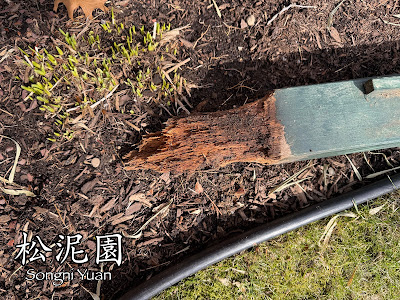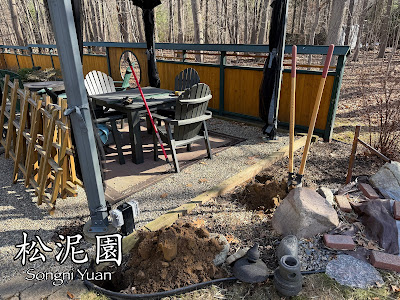It's mid March and the weather is starting to warm up a bit. As a result, I was able to get into the garden early to start some cleanup and maintenance. Unfortunately, the Clumping Bamboo (Fargesia rufa) in the garden took a heavy hit this winter. The deep freeze throughout the winter left most of the existing bamboo leaves wilted and dead. This often happens during cold winters, but last year was an exception. Almost all of the bamboo survived and thrived. Not so this year.
Wanting to remove the dead stocks before new shoots emerged, I cut back all of the bamboo within the garden, starting with the area along the sukashigaki or "see through fence."
These two beds look devastated and I am hoping they recover as soon as possible.
I cut the shoots down to the ground. Doing so will make it easier to rake and clean out in the future. Remember to wear good knee pads when doing this work. The small bamboo spikes that are left behind are sharp, pointy, and painful to kneel upon.
I also had to remove the bamboo in other locations as well: middle gate, behind the garage, and along the stroll garden.
It would have taken all day, but I used a powerful hedge trimmer and reduced the time in half. However, I still had to trim down some of the spikes with hand clippers when done.
It will take some time for new shoots to emerge and fill in the larger areas. We won't see thick heavy growth until late August if we are lucky. On the positive side, with the bamboo gone along the "see through fence" I can now begin the process of removing and replacing the rotten fence posts that need replacing.











